2015 Yamaha Viper L-TX DX Review

Our crossover of choice
All things being equal, which they are not, picking between the 2015 Yamaha Viper L-TX DX and its Arctic Cat counterpart, we’d go for the Yamaha. After a season playing with and learning the subtle differences between the Arctic Cat-built Yamaha Viper and the real deal Cat, there are enough differences for the better that make us prefer the Yamaha-branded version. But, it will be obvious to any long term Yamaha owner, that regardless of the Yamaha logo emblazoned on the Viper, it is essentially a Yamaha-powered Arctic Cat, which isn’t bad when it comes to light and nimble trail performance.
Engine Type:Horizontal In-line
Cylinders:3
Engine Stroke:4-Stroke
Valve Configuration:DOHC
Displacement:1049 / 64
Starter:Electric
Turbocharged:No
View Full SpecAlthough the Viper and selected Arctic Cats feature power from Yamaha’s high-performance version of its 1049cc Genesis 4-stroke, the Vipers use a matched Yamaha clutch system to deliver the engine’s claimed 135-ish horsepower. Consider this a good thing as Yammie-powered Cats with Arctic Cat’s drive reportedly suffered some issues, while the Yamaha clutched sleds didn’t.
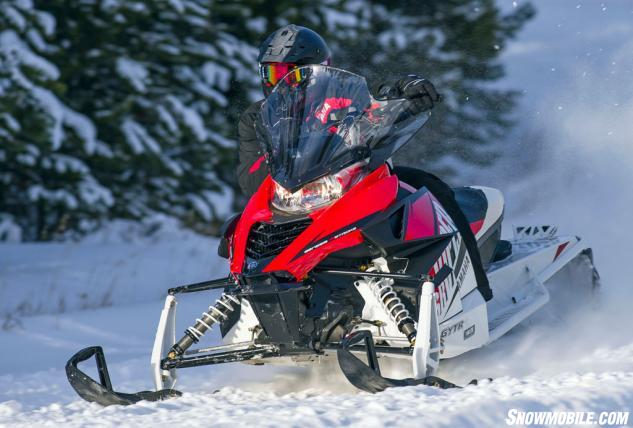 The “DX” in bright red and vibrant white stands out in the corners and on the trail.
The “DX” in bright red and vibrant white stands out in the corners and on the trail.
Yamaha’s YVXC clutching has proven reliable and durable in all manner of Yamaha snowmobiles over the years. That was why Yamaha insisted that its Cat-built models used it. Because the clutching effectively evolved with various Yamaha 4-strokes, it best fits the torque and rpm characteristics unique to this four-stroke engine.
COMPARISON: Read our review of the 2015 Yamaha SR Viper R-TX DX
In our season-long experience with a 2014 short-tracked Viper, drivetrain performance was just fine. The engine for both brands is fitted with a Cat-specified 41mm triple throttle bodied electronic injection intake and three-into-one right side exiting canister exhaust. The clutch option is the key differentiator here. While Yamaha engineers prefer more engine braking than Arctic Cat’s designers, the 2015 Viper L-TX DX will give you a bit of engine braking designed to mimic a two-stroke’s coasting feel. This on-trail action is derived from what Yamaha calls its unique Engine Braking Reduction System that permits a small amount of air to pass through the fuel injection system during off-throttle.
The drivetrain, while similar in both Cat and Yamaha, is not the same and we feel that the all-Yamaha engine and clutch combination works the best. Simply, all things are not equal in this regard. But things are the same when catching and controlling your on-trail speed thanks to a very effective Hayes disc braking system. Tapping the brake lever actuates smooth action via a hydraulic radial master cylinder that works on a driveshaft-mounted eight-inch rotor. You’ll appreciate its feel and ability to modulate the brakes and work the Viper L-TX DX’s 137-inch long track.
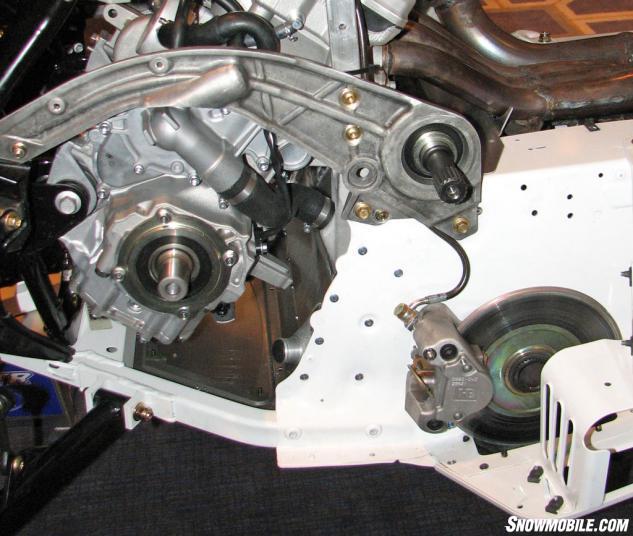 The Hayes hydraulic brake system is mounted low and on the drive shaft for positive “whoa-power.”
The Hayes hydraulic brake system is mounted low and on the drive shaft for positive “whoa-power.”
Before Yamaha joined forces with Arctic Cat, the company worked closely with track maker Camoplast to develop the original Ripsaw track design. The latest Ripsaw II is an evolved lighter weight single-ply version with a new and more aggressive 1.25-inch tall lug pattern that assures more effective lateral control. The evolved grip allows the Viper L-TX DX to corner more aggressively and to hold that grip when powering out of turns.
The Viper series gets its superior on-trail grip and go from its use of the Cat-derived chassis that maximizes centralized mass for a true neutral weight bias, which is a plus on and off trail. Fitted neatly and low in the engine cradle aft of the ski stance centerline yet ahead of the ride-forward driver seating position, the sled reacts quickly to handlebar inputs. Reaction will be improved on the 2015 Vipers as Yamaha fits its own exclusive Deep-Keel Tuner ski to the tall spindle Cat-developed front suspension. Yamaha claims that its engineers developed specific to the Viper ski versions that are designed to reduce on-trail darting, noise and improve straight-line stability. The “tuner” skis uses dual keels, each with its own wearbar. You can choose from four different wearbar configurations and fit any combination to match your own handling preferences.
The 2015 Viper continues to deliver what first-year owners liked best. The sled handles better than the now discontinued Yamaha Nytro models. It feels more nimble, quicker to turn into corners and lighter on your arms and shoulders when pounding through deep to moderate moguls. That feeling of being less beat up comes directly from the double A-arm, tall spindle front end.
That banging and impact commonly felt through your arms and creating serious wear on the chassis when hitting big bumps has been reduced by mounting the A-arms at a 30-degree angle from the sled’s centerline.
That tall spindle design and wide A-arm spacing results in less flex and stress through the front suspension and translates directly into more consistent cornering.
The L-TX DX should be popular with riders who want just that – riding in lieu of putzing with shock calibrations. Unlike “air” shocks, the L-TX DX standard coil-over high-pressure gas shocks can be easily tuned and generally will not require the detailed attention of air shocks. We prefer this set up and found the aluminum-bodied gas shocks on our season-long 2014 test sled just fine. The premium shocks look sporty, but we’d bet that very few owners of Vipers with those shocks actually maximized the shock’s capability. Maybe my being “lazy” pays off. During our test rides of the 2015 Viper models, we didn’t discern a huge increase in front end performance with the air shock equipped versions. And I didn’t need to spend ride time fussing with shock settings. But, the shock choice, that’s up to you and your checkbook as the value you place on premium shocks.
The Viper’s Dual Shock SR 137 rear suspension works well as it mimics Arctic Cat’s Slide Action crossover parallel design with its up to 13.5-inches of travel. The added length of the 137-inch track allows the sled to handle deeper off-trail snows that you’ll find when exploring unplowed fire roads or ungroomed trails. The design’s half-inch slip action lets the suspension transfer weight bias back and forth for controlled acceleration and deceleration. You’ll get float action to climb up on the snow and when slamming into a turn the front end will plant and stay planted. No surprises with this suspension set up.
COMPARISON: Read our review of the 2015 Ski-Doo MXZ TNT ACE 900 + Video
In addition to pluses of the mechanical design of the suspensions, the Viper employs one of the best rider positions in the sport. The seat is just about perfect for any rider from about 5’ 8’’ to an athletic six-plus feet in height. You will find the ride-forward seating has you able to bounce up quickly to stand up through nasty big bumps, yet comfortably placed to enjoy stretched out cruiser riding. The handlebar may be the best in the business with just the right twists and bends built into its design. Plus, it’s simple bell crank action combined with over-the-engine location lets the Viper turn sharply and quickly. It’s all that you want in a trail sled that has an adventurous off trail persona.
All things being equal, the stretch track Viper L-TX DX could be all the sled any rider needs. It can handle trails like a shorter Viper RTX, but it lets you look for adventure down unplowed snow trails. Power? Yamaha’s 4-stroke triple provides ample torque, excellent drive off, joyous midrange and plenty of top end. It’s smooth, powerful and virtually bulletproof.
With the 2015 Yamaha Viper L-TX DX you’ll get sport performance with nice-to-have features like onboard storage bag, pushbutton mechanical reverse, twist of the key starting, heated seat, mid-height windshield and easy to tune suspensions.
If you want a quality ride that will keep you on the trail all season long, check out this Yamaha. Yes, there is an Arctic Cat counterpart for the same money, but based on what we learned last winter, we’d go with the Yamaha as our first choice.
| 2015 Yamaha SR Viper L-TX DX Specs | |
| Engine | Yamaha Genesis three-cylinder, four-stroke high-performance 1049cc; bore/stroke of 82.0mm/66.2mm; liquid-cooled; 3x41mm throttle bodied electronic fuel injection system; dry sump lubrication |
| Horsepower | 130+ |
| Drive | Yamaha YVXC drive clutch with Yamaha driven |
| Front Suspension | Yamaha SRV tall A-arm with rebuildable HPG aluminum shocks; up to 10.0 in of travel |
| Rear Suspension | Yamaha Dual Shock SR 137 parallel slide rail; aluminum rebuildable high-pressure gas shocks; up to 13.5 in of travel |
| Brake | Radial master cylinder hydraulic brake system with disc mounted on drive shaft |
| Length | 125.0 in |
| Height | 48.8 in |
| Width | 48.0 in |
| Ski Stance | Adjustable from 42-43 in |
| Track | 15 x 137 x 1.25 Camoplast Rip Saw II |
| Weight | N/A |
| Brake | Hayes radial master cylinder hydraulic brake system with disc mounted on drive shaft |
| Fuel Capacity | 10.0 US Gal (Regular fuel) |
| Features | Heated seat, rear storage bag, digital gauge, push button reverse, electric start; Yamaha Tuner skis |
| MSRP | US$12,549 – CDN$14,149 |



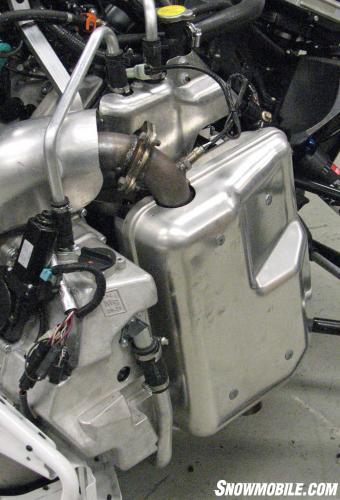
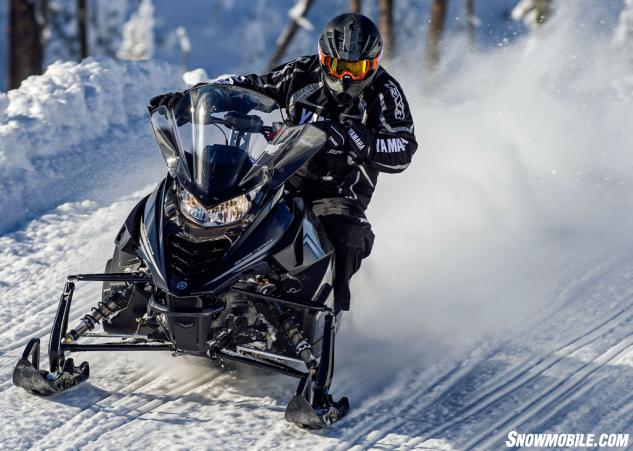
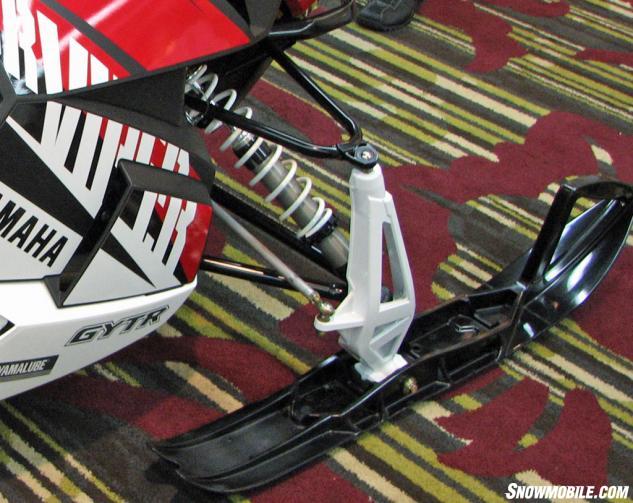
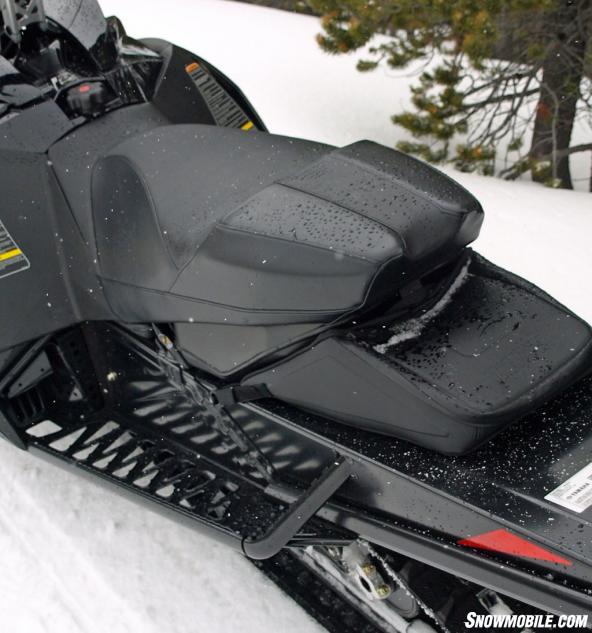





 Your Privacy Choices
Your Privacy Choices